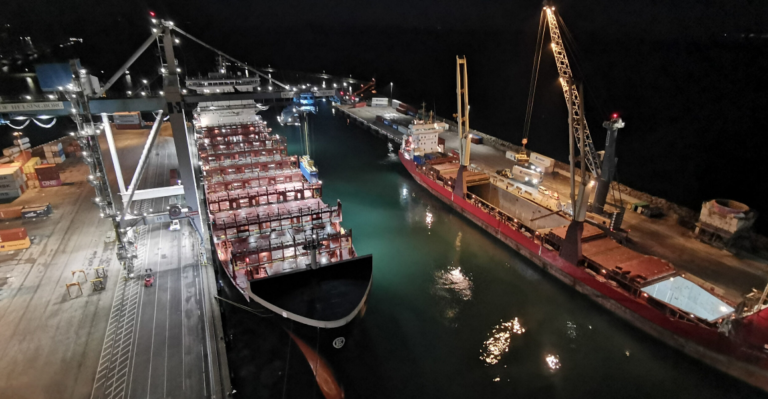Sweden’s Port of Helsingborg to Introduce Onshore Power Supply for Container Vessels
Sweden’s Port of Helsingborg is planning to build and inaugurate its first onshore power supply (OPS) facility for container vessels, in line with the long-term strategy of shutting the door to fossil-based operations.
According to the port’s officials, commissioning is envisioned for the fall of 2026, following which boxships will have the possibility to plug into electric power at berth at the container terminal.
The development comes after a 2019 ruling of the Environmental Permit Authority, which mandated that the Port of Helsingborg needed to have shore power available for container vessels within “the next seven years.”
With the OPS site, developed together with Actemium, the port—which already has a shore power connection available for ferries—hopes to meet both the ruling’s requirement and future technical demands.
As disclosed, the planned facility is going to boast a capacity of up to 3.5 megawatts, said to equal the energy needs of a typical feeder boxship and be compliant with international standards.
Bart Steijaert, CEO of Port of Helsingborg, shared that this new development was a “major milestone” in the port’s climate transition, given that it could provide the necessary springboard for a fossil-free future.
“Being able to connect to electricity immediately upon arrival is something we’ve long called for. It significantly reduces our port-side emissions and helps us reach our own climate targets,” Gunnlaugur Grettisson, Managing Director of Helsingborg-based logistics services provider Eimskip Sweden, further remarked.
Onshore power supply technology has been gaining ground across European ports, though the progress within this landscape has, somewhat, retained a snail’s pace.
European Ports Unplugged: The State of Shore Power Infrastructure
A study titled “European ports unplugged: The state of shore power infrastructure”, carried out by Oslo-based classification society DNV, on behalf of Transport & Environment, revealed that—to date—just 20% of the EU’s required electric shore power infrastructure has been installed or commissioned in major ports.
In practice, this means that most containerships, cruise ships, and ferries continue to run on fossil fuels while docked. To meet the 2030 climate goals, another report suggested that the European Union (EU) would have to triple or quadruple its installed shore power.
As the representatives from the Port of Helsingborg have elaborated, the EU has, in fact, laid out the foundation to require larger vessels to use shore power while at berth, though the outcome of these ambitions as of yet remains shrouded in uncertainty.
Future Plans and Initiatives
It is worth noting that a select number of northern ports, such as Hamburg, Gothenburg, Bremerhaven, Stockholm, and Aarhus, have secured EU funding under the Connecting Europe Facility to enable OPS for container ships by 2030.
Furthermore, Hamburg plans to mandate cruise ships to connect to shore power while docked at the port, starting from 2027. As for Sweden, the country’s Port of Stockholm inaugurated its first shore power site for cruise vessels in September 2024, which was followed by the opening of the second facility in May 2025.

